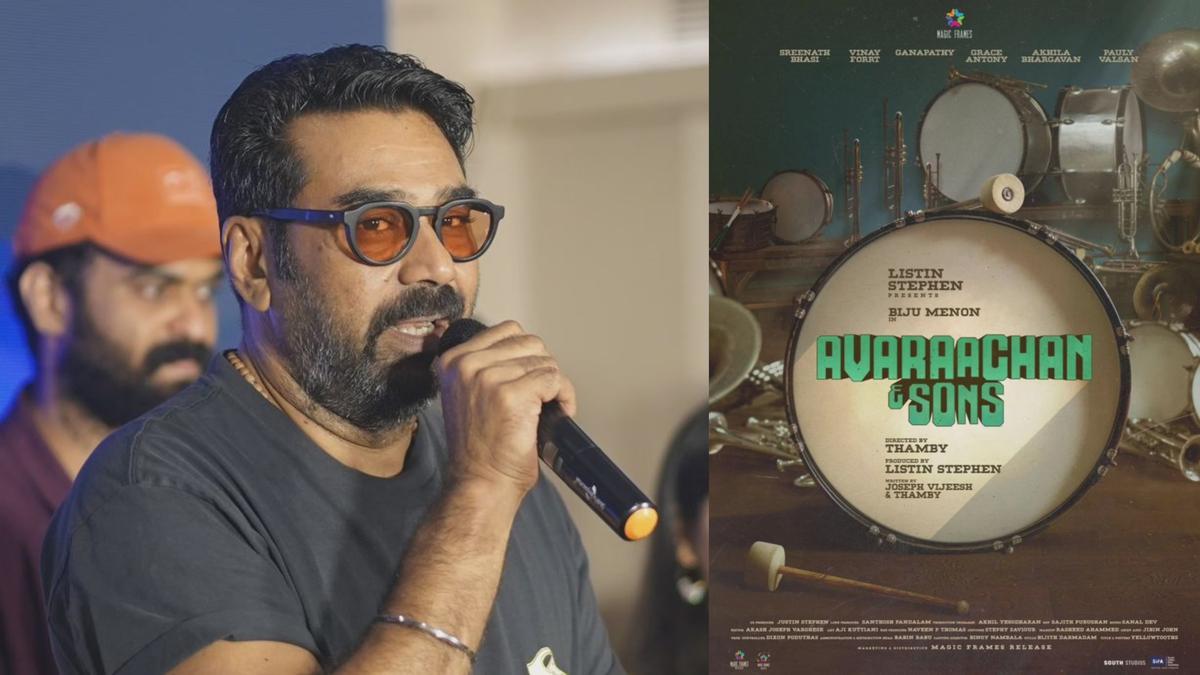
In the organized chaos of Chennai’s Kannagi Nagar stands a white facade of a three-storey building, capturing ephemerality unlike any other. This isn’t just an ordinary structure—it bears a mural in shades of grey that only reveals itself as the sun ascends, an intelligent shadow play depicting the crisis that plagues this resettlement locality, some 20-odd kilometers from Chennai city, every single year: water shortage. As the sun rises each morning, residents await the mural’s image, mirroring their daily wait for water—a poignant embodiment of their enduring struggle. For Daku, also known as Hanif Kureshi, time itself has always been a conduit for expression, a medium through which to communicate deeper truths.
In 2022, the streets of Fountainhas in Goa were introduced to his dancing alphabets, playing to the rhythm of the sun. In a reflection of the catastrophic pandemic, Kureshi compared it to the Spanish flu, pointing to the cyclical nature of history. His favoured medium, light and shadow, eloquently captured this repetition.
Yet, the nation now collectively mourns the artist’s passing at the age of 41, following a year-long battle with lung cancer.
“Daku. What a badass, right? To make such political, powerful, and fearless public art interventions in India at a time when public art was not even a thing!” asks fellow artist Shilo Suleiman, reflecting on his courage and visionary spirit. “What a visionary builder and mentor to a community,” she adds.
Photographer and artist Guido Van Helten recalls spending days capturing local women at the docks for a project led by Kureshi, resulting in grand portraits adorning the warehouses of Sassoon Dock—a space where similar labor continues as it has for the past 142 years. To many, Hanif was more than a collaborator; he was a mentor and a friend. Suleiman fondly remembers how Hanif played a pivotal role in uniting the street art community and providing opportunities and infrastructure for artists.
“He was voracious, inclusive, loving, and passionate—a freaking genius,” Shilo reminisces. From his early days in Talaja, Gujarat, Kureshi’s works were always a force within the contemporary Indian art scene. He pioneered movements to elevate regional art to the mainstream, challenging the traditional gallery spaces and instead bringing art to the streets. His works were often bold statements, manifested through large flex boards or simple but striking messages, such as a stop sign in Delhi that read, “Stop Gossiping.”
Riyaz Amlani, a longtime collaborator and friend, recalls, “He had a way of wearing his art so gently.” One of Hanif’s groundbreaking projects was HandpaintedType, aimed at preserving the traditional typographic practices of sign painters across India. “He was incredibly passionate about typography.
. It was one of his greatest loves. He was an analogue brain in a digital world. His appreciation for craftsmanship was unparalleled,” Riyaz recounts, describing Kureshi as a breath of fresh air in the contemporary art world struggling with the balance between traditional and modern aesthetics.
Kureshi’s ambitious St+art India project, co-founded with Guilia Ambrogi, Arjun Bahl, Akshat Nauriyal, and Thanish Thomas in 2013, marked a significant step towards democratizing art with public-facing murals. The project culminated in the establishment of India’s first-ever art district in Delhi’s Lodhi Colony in 2014.
“Initially, we did everything ourselves. We carried paint buckets, pasted posters, and transported equipment. Nobody understood what we were doing. It almost felt like street art was a game then, and it was beautiful because it brought together a bunch of passionate individuals,” recalls Guilia Ambrogi.
There was also a quieter side to Hanif. Guilia remembers their endlessly curious strolls through the streets of Paris, seeking out public art, and their time in their first studio by the lake in Haus Khas village.
As St+art India grew, so did the balance of ideas between Guilia and Hanif. “I never heard Hanif complain. Even after his diagnosis, he never did. He was like the sun, so full of energy,” Guilia shares.
In a recent conversation with Kureshi, Suleiman recalls, “Even through his deteriorating condition, we had long discussions about how artists often feel immortal. We work hard, barely sleep, and as vessels of creative vision, we forget our humanity and need for routine. It’s my biggest takeaway after losing him.”
The contemporary art world has suffered a great loss with Hanif Kureshi’s passing, but his legacy continues to inspire and elevate. His works stand as a testament to the power of street art and the importance of community within the artistic realm.
Published – September 25, 2024 05:07 pm IST
The Hindu Weekend










